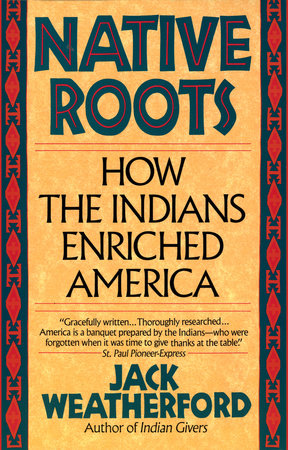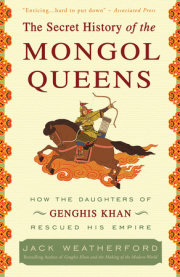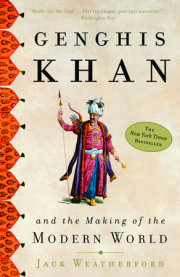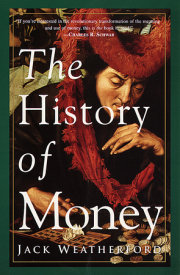1
America ends at Tuktoyaktuk. There the land yields to the Arctic Ocean and the polar ice cap. Except for a few distant islands, human habitation stops. The frozen world beyond Tuktoyaktuk belongs to the seal-hunting polar bears that eternally wander the ice, and to the small herds of caribou and wild musk oxen that inhabit the most northern islands of the earth.
The treeless, nearly barren Tuktoyaktuk Peninsula juts hesitantly from the Canadian mainland into the cold Arctic waters, but for most of the year the ice covering the land of frozen bogs and lakes looks much like the ice covering the ocean. The only landmarks separating Tuktoyaktuk Peninsula from the Arctic Ocean are the scattered pingos, the small, round ice volcanoes that poke up out of the earth like ruptured navels. In contrast to the frozen sea, the frozen land also serves as home to a band of nine hundred native Inuvialuit who built their village around a rocky bay at the base of the peninsula.
Tuktoyaktuk also hosts a second settlement, a radar station huddled within its own fence and protected by its secretive domes. The United States military operates the station as part of the DEW line, the Distant Early Warning system, across the Arctic. No two cultures could seem more different than this native village of polar bear and beluga hunters next to a compound of radar technicians, electronics specialists, and computer personnel. One group belongs to the frozen land where it has lived for millennia, and the other is totally alien and composed of rotating cadres of young men and a few women from a much different environment. If cut off from outside contacts and supply lines, the people of the radar station would probably die as soon as they exhausted their food, gasoline, and ammunition, but the Inuvialuit could continue to survive on the peninsula alone for another thousand or so years, just as they have done in the past.
America ends in Tuktoyaktuk not merely because the road ends there, but because Tuktoyaktuk represents the final stages of a process of social and cultural contact that has taken five centuries to unfold. Tuktoyaktuk straddles the continent’s last frontier, where the radically different worlds of “native Inuvialuit and modern Americans face each other. In Tuktoyaktuk there seems to be no today; one sees only yesterday on one side and tomorrow on the other.
Despite their differences, the two communities, so far from other human habitation, hug up against each other for mutual protection and warmth against the Arctic wind and the eternal night of winter. The military station provides a few jobs and goods for the local Inuvialuit. The Inuvialuit hunters share caribou with the men stationed at the radar station, and sometimes the technicians get sconelike bannock from the village women, or buy their souvenir moccasins and dolls made from seal fur.
“I had experienced this same symbiosis of dramatically different cultures in several special places, before coming to Tuktoyaktuk. I had seen it among the Bedouin herding their sheep and camels across the Egyptian desert, living at once in permanent contact with the cities of the Nile, and yet maintaining a vast cultural distance from them. I had seen the same cultural gap in the fearful face of a Chinese boy soldier nervously watching an elderly Tibetan women throw herself forcefully and repeatedly in the dirt to prostrate herself before the barred doors of the Jokhang, the holiest temple of Tibetan Buddhism. I had seen it in the mild flirtation and haughty withdrawal of nearly naked tribal women crossing the Sahara on the back of a truck and separated from the blue-veiled Tuareg warriors by a wall of desert salt slabs being hauled to market in Timbuktu.
William, a hunter from Tuktoyaktuk, running with his dogs and sledge past the radar station fence, appeared much like Abdul the Badu walking his camels at a respectful distance from the pyramid of Meidum near al-Faiyum oasis. But there was also a major distinction that separated the cultural mix of Tuktoyaktuk from that which I found in all those other places. The nomadic Bedouin have lived beside the stone cities of the Nile for thousands of years. The scene of the Badu driving his herds and flocks past the pyramids could have been the same three thousand years ago as it is today. The Chinese and the Tibetans have lived side by side for thousands of years, sometimes at war and sometimes peacefully sharing religion, tea, and, in marriage, each other’s children. The Bororo, the Bambara, and the Tuareg of the Sahel have visited the salt market of Timbuktu for as long as the city has existed.
These ancient cultures have maintained their cultural and spatial distance and yet interacted with one another for millennia. In Tuktoyaktuk, the interaction has just begun within the lifetime of the people still living there. The mixture of the other cultures I had seen across the globe had been allowed to work itself out slowly through thousands of years, but in America, disparate cultures have clashed more quickly and intensely than ever before in human history.
In the fourteenth century, the North African historian and social philosopher Abd-al-Rahman Ibn Khaldun became the first scholar to analyze the importance of the relationship between tribal and urban nations. In his lengthy study the Muqaddamah, the preface to world history, he recognized that the key to understanding Mediterranean and even world civilization lay in this dynamic tension between the tribal peoples and the cities. The cultural contact of such different groups added vitality to their political systems, their economic ties, and their religious beliefs. Most of the world’s great empires have arisen when small states conquered surrounding tribes or when nomadic tribes such as the Mongols, Huns, Tartars, or Arabs conquered settled nations. During times of peace, tribal peoples often controlled the commerce between major urban areas such as the salt, gold, and ivory routes across West Africa or the Silk Road that connected the ancient Mediterranean with India and China. By controlling the lines of commerce, they also controlled the flow of ideas and the spread of world religions. Without the tribal people, the urban people remained isolated and stagnant.
Ibn Khaldun died in 1406, the century of Spain’s “discovery” of America, but the ensuing history of North America has proven the accuracy of his analysis. With the arrival of explorers followed by traders and settlers, a chain reaction of cultural explosions ripped across North America.
The coming together of the varied native cultures of North America with the rest of the world generated a long list of superlatives. The United States became the world’s first federal democracy and, together with Canada, made North America the largest democratic area in the world. Later it became the most potent military power in the world, and the technological leader in the exploration of outer space. As the largest producer of agricultural and industrial goods, the United States and Canada became the world’s largest common market and one of its most powerful economic engines.
The great achievements of North America in economics, politics, technology, and agriculture have resulted from the rich diversity of peoples and cultures that have come together in this continent, a mixture that has created new social systems and a uniquely American culture. Beneath the surface of each of these American accomplishments lie indigenous roots. The settlers grafted their civilization onto the native American roots, and together they produced a hybrid civilization of unprecedented vigor.
Only a historical moment ago, a mere thousand years, the first European settlers arrived from Scandinavia, ready to make new settlements on the Atlantic Coast of Canada. After the thorough and decisive defeat of this Viking colony, the Europeans did not return for five hundred years, until the accidental arrival of three Spanish ships lost in the Caribbean in 1492. Yet another century passed before arrival of the first permanent European settlers and their African slaves in what was to become the United States and Canada.
This cultural transformation that started with the voyages of Leif Eriksson and his followers to North America around A.D. 1000, accelerated with the English settlement of Jamestown in 1607 and reached a frenzy as it moved westward toward the Pacific coast in the nineteenth century, has now reached distant Tuktoyaktuk, where it is winding down on the Arctic shore. The process of change through cultural contact and the mixture of various populations will probably continue as long as humans live on earth, but it will probably never again attain the dramatic proportions that it did in North America in the last few centuries.
All of America was once Tuktoyaktuk. At some time in the last five hundred years every valley, every beach, every river, every lake, every mountain, every island, every plain, every forest, and every community has stood on the cutting edge of the frontier where the old world encountered the new, where the civilizations of incoming settlers encountered the civilizations of native America. The American frontier mixed together Pilgrims with Pequots, Frenchman with Hurons, Spaniards with Choctaws, Africans with Seminoles, Germans with Dakotas, Basques with Navajos, Chinese with Haida, Jews with Kiowas, Russians with Aleuts, Vietnamese with Menominees, Scandinavians with Inuit, Hmong with Ojib-was, and Dutch with Dene. The scramble of peoples and cultures in North America has created a cultural mixture that probably will not be repeated in world history until we encounter life on another planet.
Copyright © 2010 by Jack Weatherford. All rights reserved. No part of this excerpt may be reproduced or reprinted without permission in writing from the publisher.













